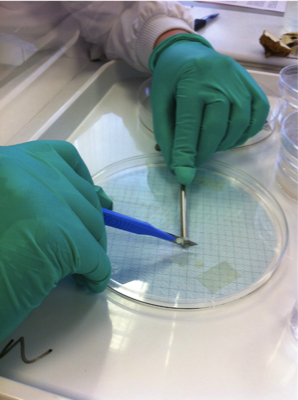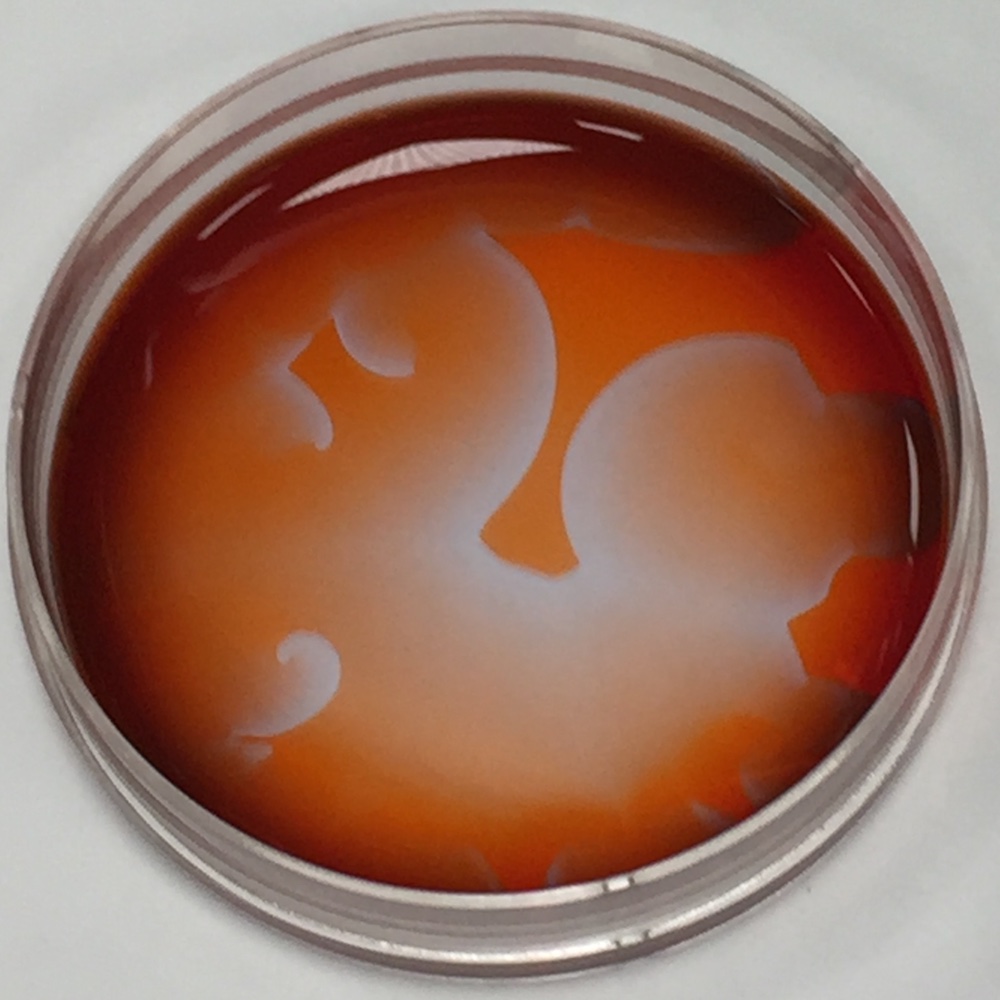
The differentiation of cambial cells into vessels or tracheids with lignified walls is triggered by auxins. Auxins will induce xylogenesis in a number of plant tissues and, as in all other hormone mediated processes, there may also be a requirement for gibberellins and/or cytokinins (Sugiyama and Konamine, Cell Differentiation Dev. 31, 77, 1990).
Explants of Jerusalem artichoke (Helianthus tuberosus L.) tuber have been shown to develop wound vessel members (WVMs) on a nutrient agar containing an auxin. The addition of cytokinins and gibberellins alters the arrangement of the tracheids (Dalessandro and Roberts, Am J Bot. 58, 378, 1971; Dalessandro, P Cell Physiol. 14, 1167, 1973).
In this practical, you will produce sterile explants and grow these on different hormone-containing media. A week later, you will stain differentiated xylem elements, record patterns within the explants, and quantify the extent of differentiation under the different treatments.
Explants of Jerusalem artichoke (Helianthus tuberosus L.) tuber have been shown to develop wound vessel members (WVMs) on a nutrient agar containing an auxin. The addition of cytokinins and gibberellins alters the arrangement of the tracheids (Dalessandro and Roberts, Am J Bot. 58, 378, 1971; Dalessandro, P Cell Physiol. 14, 1167, 1973).
In this practical, you will produce sterile explants and grow these on different hormone-containing media. A week later, you will stain differentiated xylem elements, record patterns within the explants, and quantify the extent of differentiation under the different treatments.


Review: The control of vascular development

Review: Xylogenesis - initiation, progression and cell death

The contribution of auxin and cytokinin to symmetry breaking in plant morphogenesis.

Belousov-Zhabotinsky reactions
The induction of xylogenesis in the plant tissue discs is an example of spontaneous patterning - triggered by feedback and communication. The practical will also demonstrate analogous processes occurring during the Belousov-Zhabotinsky reaction.
Background information:
Extract from the Philip Ball book: “Shapes - Nature’s Patterns: a tapestry in three parts” is provided as reference material. This contains a non-technical description of the processes at work in this complex set of chemical reactions.
Background information:
Extract from the Philip Ball book: “Shapes - Nature’s Patterns: a tapestry in three parts” is provided as reference material. This contains a non-technical description of the processes at work in this complex set of chemical reactions.
